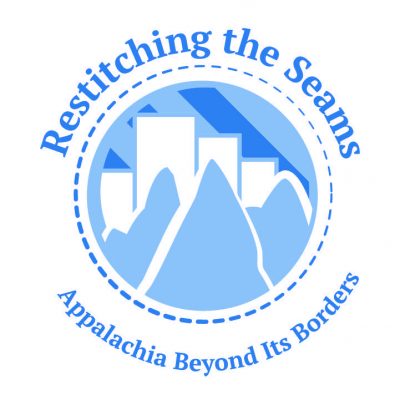Participation Type
Paper
Presentation #1 Title
Reflecting on Rash Choices: Reading Something Rich and Strange with Ex-Offenders
Presentation #1 Abstract or Summary
Reflecting on Rash Choices: Reading Something Rich and Strange with Ex-Offenders
In her review of Ron Rash’s Something Rich and Strange, Maureen Corrigan asserts, “Mercilessness… characterizes the atmosphere of many of the… stories in Rash's collection, specifically those that chronicle the rural meth epidemic.”[1] To set such fiction before formerly incarcerated men, many of whom are struggling to transcend addiction, might seem an act of cruelty. During my recent sabbatical, however, I did just that at a residential transitional center near Eastern Mennonite University, where I teach. Having completed our Summer Peacebuilding Institute’s Strategies for Trauma Awareness and Resilience (STAR) Level I training a few months earlier, I suspected that Rash’s fiction could provide recovering addicts with a back door into considering the conditions that contributed to their criminal acts. Reading Rash might also, I hoped, empower them to resist recidivism.
To undertake this project, I drew insights from such works as John Paul Lederach’s Little Book of Conflict Transformation and The Moral Imagination: The Art and Soul of Building Peace, Peter A. Levine’s Waking the Tiger: Healing Trauma, and Carolyn Yoder’s Little Book of Trauma Healing: When Violence Strikes and Community Security Is Threatened. My work’s primary “text” was, of course, interaction with transitional center residents over Rash’s fiction. The population was almost evenly divided between African-Americans from the Hampton Roads/Virginia Beach area and whites from the southwestern corner of Virginia. Since ex-offenders usually return to their home communities after completing this and similar programs, I hope to engage other educators in similar projects as a means of nurturing resilience in Appalachia and beyond. While many of these men have perpetrated traumatic acts, even more of them are trauma survivors. While introducing them to many types of literature could be helpful, my experience demonstrates that Rash’s book offers a particularly good point of entry into addressing addiction and incarceration, growing national problems with which Appalachia has an especially long and painful history.
[1] http://www.npr.org/2014/12/04/368510625/set-in-appalachia-this-rewarding-story-collection-is-rich-and-strange
At-A-Glance Bio- Presenter #1
Martha Greene Eads professor of English at Eastern Mennonite University in Harrisonburg, VA, grew up in North Carolina’s Blue Ridge mountains and studied literature and theology at Wake Forest University, the University of North Carolina at Chapel Hill, and the University of Durham (UK). Her research and teaching interests include twentieth- and twenty-first-century drama, English modernism, and contemporary Southern fiction, and her articles on those topics have appeared in The Carolina Quarterly, Christianity and Literature, The Cresset, Modern Drama, The Southern Quarterly, and Theology.
Conference Subthemes
Education
Reflecting on Rash Choices: Reading Something Rich and Strange with Ex-Offenders
Reflecting on Rash Choices: Reading Something Rich and Strange with Ex-Offenders
In her review of Ron Rash’s Something Rich and Strange, Maureen Corrigan asserts, “Mercilessness… characterizes the atmosphere of many of the… stories in Rash's collection, specifically those that chronicle the rural meth epidemic.”[1] To set such fiction before formerly incarcerated men, many of whom are struggling to transcend addiction, might seem an act of cruelty. During my recent sabbatical, however, I did just that at a residential transitional center near Eastern Mennonite University, where I teach. Having completed our Summer Peacebuilding Institute’s Strategies for Trauma Awareness and Resilience (STAR) Level I training a few months earlier, I suspected that Rash’s fiction could provide recovering addicts with a back door into considering the conditions that contributed to their criminal acts. Reading Rash might also, I hoped, empower them to resist recidivism.
To undertake this project, I drew insights from such works as John Paul Lederach’s Little Book of Conflict Transformation and The Moral Imagination: The Art and Soul of Building Peace, Peter A. Levine’s Waking the Tiger: Healing Trauma, and Carolyn Yoder’s Little Book of Trauma Healing: When Violence Strikes and Community Security Is Threatened. My work’s primary “text” was, of course, interaction with transitional center residents over Rash’s fiction. The population was almost evenly divided between African-Americans from the Hampton Roads/Virginia Beach area and whites from the southwestern corner of Virginia. Since ex-offenders usually return to their home communities after completing this and similar programs, I hope to engage other educators in similar projects as a means of nurturing resilience in Appalachia and beyond. While many of these men have perpetrated traumatic acts, even more of them are trauma survivors. While introducing them to many types of literature could be helpful, my experience demonstrates that Rash’s book offers a particularly good point of entry into addressing addiction and incarceration, growing national problems with which Appalachia has an especially long and painful history.
[1] http://www.npr.org/2014/12/04/368510625/set-in-appalachia-this-rewarding-story-collection-is-rich-and-strange

